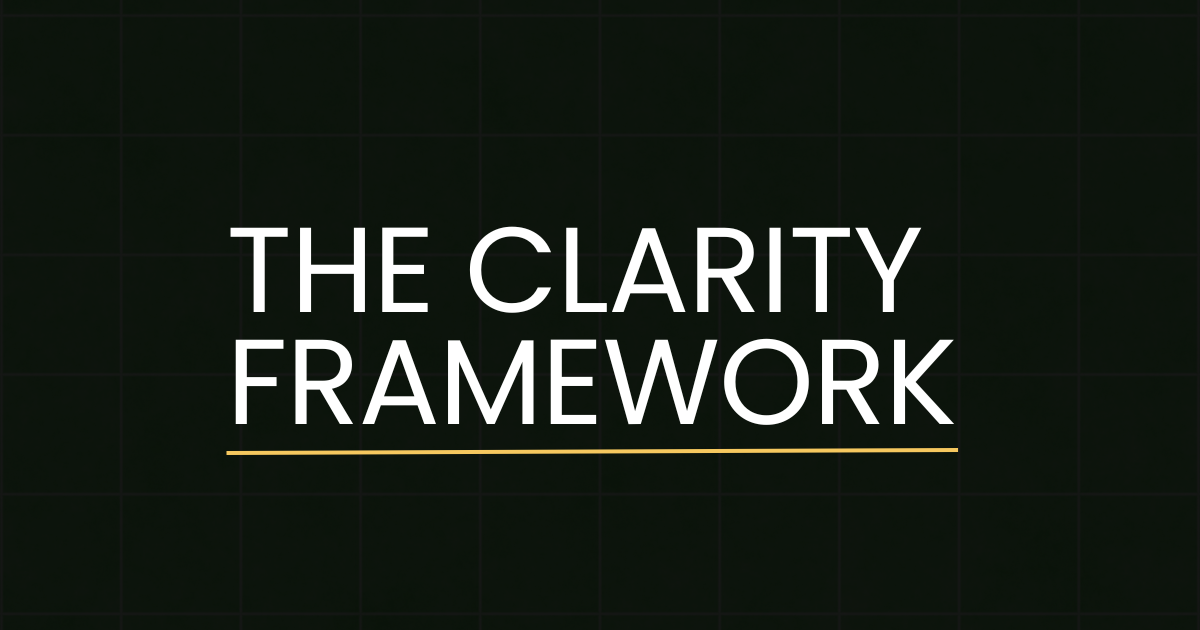Because clarity isn’t corporate — it’s human.
Why Clarity Matters in Change Communication
Clarity is the most overlooked leadership skill in transformation.
Change doesn’t fail because people resist it.
It fails because they don’t understand it.
Most organizations mistake communication volume for impact.
Emails. Town halls. SharePoint updates. Meeting cascades.
And yet—confusion grows.
The truth is, information isn’t the problem. Noise is.
Without structure, rhythm, and empathy, communication becomes static—loud but unintelligible.
That’s where The Clarity Framework™ comes in: a repeatable method to make complex change make sense.
Noise Is the Real Enemy
When everyone’s “communicating,” no one’s connecting.
In the absence of clarity, people fill the gaps with assumption and anxiety.
Leaders contradict each other. Teams hesitate. Projects stall.
Noise isn’t harmless. It drains trust, time, and energy.
Because when people can’t find the signal, they stop listening.
In change, noise doesn’t create alignment — it creates avoidance.
Clarity Is a Leadership Act
Clarity isn’t a comms tactic. It’s a leadership behavior.
The best leaders translate complexity into meaning, create consistency that builds trust, and communicate with empathy instead of ego.
Those three traits — translation, rhythm, and empathy — are what separate calm communicators from chaotic ones.
When clarity becomes part of how you lead, transformation stops feeling like chaos and starts feeling like progress.
The Hidden Cost of Poor Communication
According to Prosci’s global research, projects with excellent change management are seven times more likely to meet or exceed objectives.
And the number-one success factor?
“Communicate frequently and openly.” — Prosci Benchmarking Report
But frequency alone doesn’t drive results. Precision does.
When communication is clear, targeted, and consistent, 79% of change initiatives succeed.
When it’s inconsistent or vague, success drops to 27%.
That’s not a small gap — that’s the cost of confusion.
Translation: clarity drives ROI.
The Clarity Framework
The Clarity Framework helps organizations cut through complexity, align leadership, and connect with their people during transformation.
It’s built on five principles that make clarity repeatable, no matter how complex the change.
1. Diagnose What’s Really Blocking Understanding
Most change teams skip straight to output — town halls, toolkits, talking points — without diagnosing what’s actually unclear.
Clarity starts with curiosity.
Ask:
- Where are people getting stuck — the process or the purpose?
- Do leaders share the same message?
- Is the story understood the same way at every level?
When you diagnose before you deliver, you stop reacting and start leading.
2. Define the Core Story
Every change needs a single throughline — the story that explains why it matters.
Your story should answer three questions:
Where are we now → What’s changing → Why it matters to me.
If people can’t repeat that in their own words, you don’t have clarity yet.
(For a deeper look at message structure, read How to Write a Change Message People Actually Read.)
3. Design a Rhythm That Feels Human
Communication isn’t about frequency — it’s about predictability.
A steady rhythm builds trust and lowers anxiety.
Random updates do the opposite.
Define your cadence, your channels, and your ownership model early.
Then stick to it.
Predictable communication helps people feel anchored, even when everything else is shifting.
4. Deliver with Empathy, Not Ego
Empathy is the difference between being heard and being believed.
Drop the corporate tone.
Speak simply, honestly, and like a human.
Invite feedback. Acknowledge discomfort.
Empathy doesn’t soften the message — it sharpens it. Because people trust what feels real.
5. Measure Understanding, Not Just Output
Activity metrics — open rates, attendance, content count — don’t measure clarity.
Understanding does.
Ask employees to explain what’s changing in their own words.
Audit messages for consistency across leaders and channels.
Listen more than you publish.
Clarity is proven when everyone’s story sounds the same — no scripts needed.
The Proof Is in the Pace
When a leadership team I supported was drowning in competing transformation messages, we didn’t start with another campaign.
We started by defining one shared narrative.
Then, we rebuilt their communication rhythm around it.
The outcome:
- A visible drop in confusion
- Faster decision-making
- Leadership finally aligned behind one story
Clarity didn’t just make communication better.
It made execution possible.
Where to Start
You don’t need a new platform or a 12-person comms team to lead with clarity.
You need the discipline to:
- Focus messages on what matters most
- Cut jargon that clouds understanding
- Create rhythm people can trust
- Repeat key messages until they stick
- Measure alignment regularly
It’s the difference between change that drifts and change that lands.
Final Thought
Clarity isn’t just how you communicate.
It’s how you lead.
When you make information make sense, you help people believe in what they’re building — together.
Because clarity doesn’t slow change down. It makes it sustainable.
FAQs
The Clarity Framework is a method I developed to help organizations translate complex change into clear, human communication. It combines structure, rhythm, and empathy to make transformation easier to understand — and easier to lead.
Because people don’t resist change — they resist confusion. Clear, predictable communication builds trust, lowers anxiety, and helps employees focus on what matters most.
Diagnose what’s blocking understanding, define the core story, design a consistent rhythm, deliver with empathy, and measure understanding — not just output.
It shifts communication from reactive to intentional. Leaders stop reacting to noise and start creating alignment through structure, storytelling, and empathy.
Most models focus on process and adoption metrics. The Clarity Framework focuses on meaning — helping people believe in what they’re building, not just comply with it.
Explore more clarity-driven insights at anamagana.com or read The Psychology of Change Fatigue (and Why Clarity Fixes It).
About the Author
Ana Magana is a strategic communications and change management consultant based in Calgary, Alberta. She helps organizations navigate transformation with structure, empathy, and storytelling through her signature Clarity Framework.
